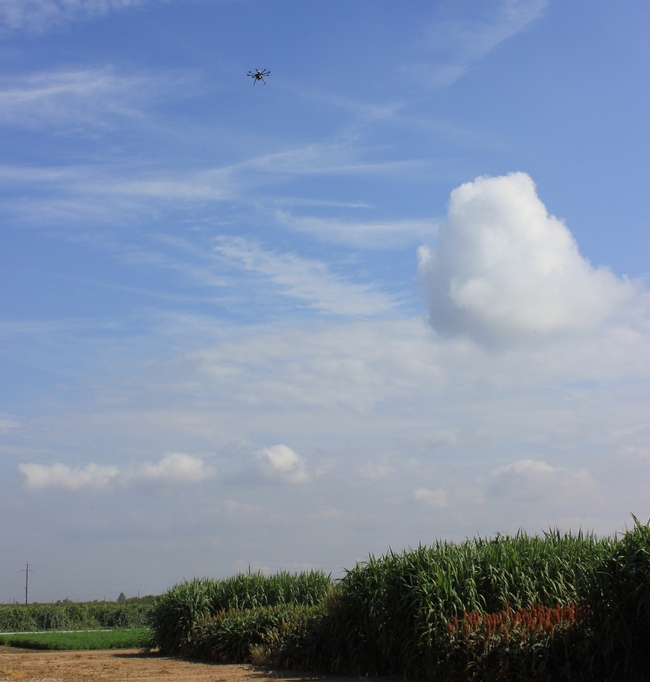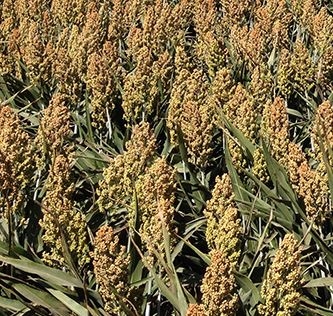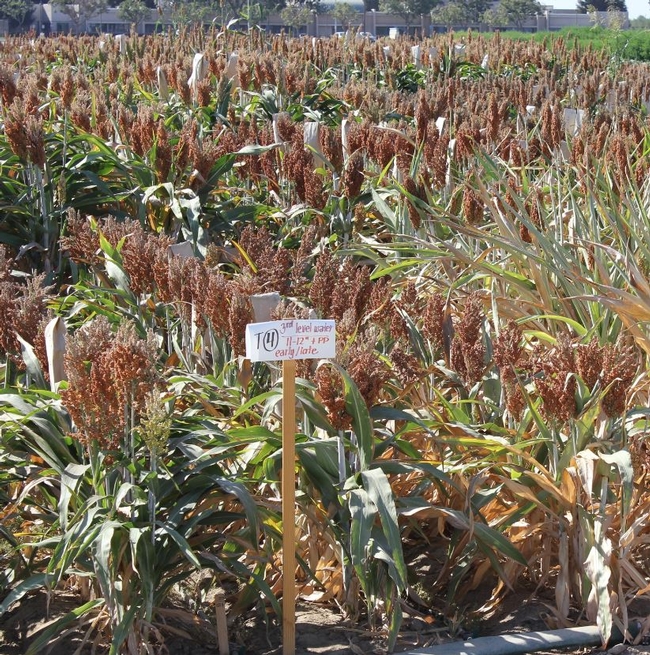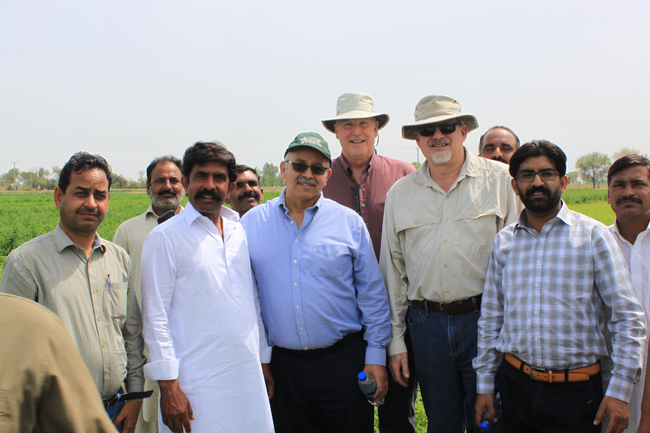Posts Tagged: sorghum
Dahlberg, Bali, and Putnam share forage expertise in Pakistan.
Two of Kearney's researchers, Jeff Dahlberg and Khaled Bali joined Dan Putnam of UC Davis in a trip to Pakistan to talk with Pakistani researchers, academics, and farmers about forage production. Pakistan has reached out to their expertise to help understand improved forage practices that will help Pakistan meet its dairy and meat needs in the future. The three UC researchers gave presentations in Faisalabad and Multan at the Agricultural Universities. Dr. Putnam gave presentations on alfalfa, Dr. Dahlberg on sorghum as a forage, and Dr. Bali on irrigation and evapotranspiration. Their Pakistani hosts were very gracious and appreciative of their efforts. While there, they also participated in a fabulous tradition at the Ag Universities, planting of a tree in each of their names. The Kearney and Davis researchers look forward to strengthening these new relationships between Pakistani scientists and those of UC and ANR.
Drones are used for research and land management; do you want to learn how to use drones?
Jeffery Dahlberg, director of UC ANR Kearney Agricultural Research & Extension Center (KARE), specializing in plant breeding and genetics, is working with drones to collect data for one of his sorghum programs. Work will continue the development of field scale drought nurseries at both KARE and West Side Research & Extension Center (WSREC) under a DOE ARPA-e funded project that utilizes drone technology to phenotype sorghum lines on a weekly basis as they are stressed under pre- and post-flowering drought stress. Research will continue this coming summer to gather additional phenotypic data, along with heat stress measurements and soil moisture monitoring. These nurseries are part of an effort to identify genes that are expressed under different field stress conditions and relate them to sorghum's ability to withstand and recover from stress.
If you are interested in learning how to use drones for research and land management, you may want to explore attending the UCANR Informatics and GIS Program's Dronecamp July 25-27, 2017 at UCANR in Davis, Calif., the application period is March 1 – April 15, 2017. Dronecamp costs $500 for UC affiliates (UC employees and enrolled students), and $900 for non-UC participants. Dronecomp is designed for participants with little or no experience in drone technology, and want to learn how to use drones for mapping applications. The intensive workshop covers drone science; safety and regulations; mission planning; flight operations; data processing; data analysis; visualization; and the latest trends and technology. Read more.

Sorghum research at the UC Agriculture and Natural Resources Research & Extension Centers available to the public.
If you are interested in getting information regarding research on the use of sorghum as a multi-purpose low-input crop for California, please go to this link. Under the research link, there are some videos showing the harvest of experimental plots as well as the use of a drone to perform rapid, robotic phenotyping of sorghum for character traits such as plant height, leaf area, and biomass area--data points used to help search for genes that control mechanisms involved in both drought tolerance and salinity tolerance in sorghum. Research is currently being performed at Kearney Agricultural Research and Extension Center, Desert Research and Extension Center, and West Side Research and Extension Center.

Photograph of sorghum plants.
Chinese delegation visits Kearney to learn about sorghum forage for dairies.
The U.S. Grains Council sponsored a team of managers from leading dairies in China to visit local dairy operations in California, discuss feed and nutrition issues, and to attend the World Dairy Expo in Chicago. The team, made up of nutritionists, farm managers, and general managers met with Jeff Dahlberg, Director of the Kearney Agricultural Research and Extension Center, and sorghum expert to discuss the potential use of sorghum forages and grain for dairy feed. Dahlberg spent several hours providing the delegation with a field tour and lecture on “what is sorghum” and its potential use as a low input, low water source for nutritious dairy feed. Dahlberg is investigating the potential of sorghum for dairies in California and information about its potential and evaluation of potential commercial sorghum forage hybrids can be found at sorghum.ucanr.edu.

Chinese delegation that visited Jeff Dahlberg's field research on the use of sorghum as a dairy forage.
Kearney sorghum research seeks to understand how the crop is able to survive water deprivation.
Kearney is participating in a $12.3M study of crop drought tolerance funded by the US Department of Energy. The five-year project is called Epigenetic Control of Drought Response in Sorghum, or EPICON. Peggy Lemaux, cooperative extension specialist at UC Berkeley's Department of Plant and Microbial Biology, is heading the entire project. Co-investigators are Devin Coleman-Derr, Elizabeth Purdom and John Taylor from UC Berkeley; Jeffrey Dahlberg and Robert Hutmacher from UC Agriculture and Natural Resources; Chia-Lin Wei from the DOE Joint Genome Institute; and Christer Jansson from the Pacific Northwest National Laboratory.
Sorghum will be studied to explore the epigenetic mechanisms that allow a crop to survive drought conditions. Epigenetic modifications turn genes on or off without modifying the DNA sequence.
“Historically, the genetic manipulation of crops, which has been critical to increasing agricultural productivity, has concentrated on altering the plant's genetic sequence, encoded in its DNA,” said Lemaux. “However, recent studies have shown that environmental stresses – in our case drought – can lead to epigenetic changes in a plant's genetic information. Because epigenetic changes occur without altering the underlying DNA sequence, they allow plants to respond to a changing environment more quickly.”
For The Daily Californian article, please click here.

Sorghum being tested for epigenetic control of drought response at Kearney.
